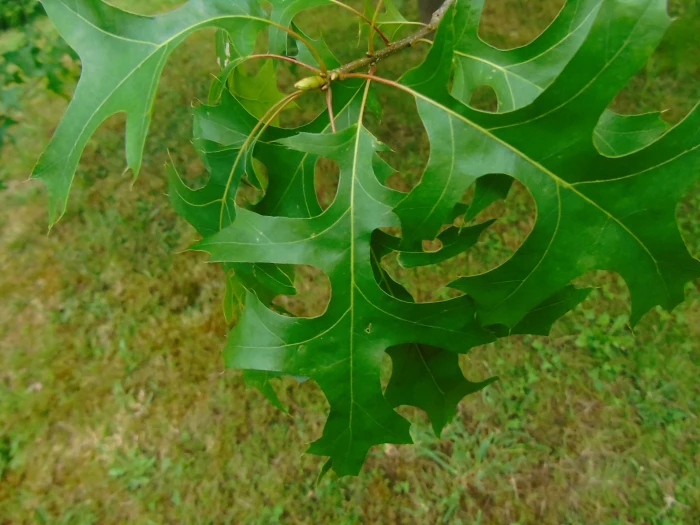Pin Oak
(Quercus palustris)
Pin Oak (Quercus palustris)
/
/

Fernando Losada Rodríguez
CC BY-SA 4.0
Image By:
Fernando Losada Rodríguez
Recorded By:
Copyright:
CC BY-SA 4.0
Copyright Notice:
Photo by: Fernando Losada Rodríguez | License Type: CC BY-SA 4.0 | License URL: https://creativecommons.org/licenses/by-sa/4.0 | Uploader: Drow male | Publisher: Wikimedia Commons | Title: Quercus_palustris.002_-_A_Pontenova.jpg | Notes: {{Information |Description=Photograph of the detail in the bark of the {{MultiLink|Flowering Dogwood}} ({{BioLinkSpecies|Cornus florida}} 'First_Lady'). Photo taken [[:en:Tyler Arboretum|Tyler Arboretum]] where it was identified.{{Ram-Ma










































































Estimated Native Range
Climate Requirements
| • Precipitation | 46" - 55" |
| • High Temp. | 84°F - 85°F |
| • Low Temp. | 23°F - 25°F |
Summary
Quercus palustris, commonly known as Pin Oak or Swamp Spanish Oak, is a deciduous tree native to lowland floodplains, wetlands, and riparian zones in the Central and Eastern United States. It typically grows to a height of 70-90 feet and a width of 40-50 feet. The Pin Oak has a distinctive pyramidal shape when young, becoming more oval with age. It features slender, drooping branches, glossy green leaves that turn bronze to red in the fall, and small, inconspicuous flowers followed by acorns that are valuable wildlife food.
Pin Oak is favored for its adaptability to urban conditions, including its tolerance to pollution and compacted soils, making it a popular choice for street plantings, parks, and residential landscapes. It thrives in full sun and can handle a range of water conditions, from medium to high, but prefers acidic, moist soils with good drainage. While it is tolerant of wet conditions, prolonged flooding can be detrimental. Gardeners should be aware of its potential for surface rooting, which can interfere with mowing and pavement. It is also susceptible to oak wilt and other fungal diseases. Despite these issues, its ornamental value, particularly the striking fall color and attractive winter branch structure, makes it a valuable addition to many gardens.CC BY-SA 4.0
Pin Oak is favored for its adaptability to urban conditions, including its tolerance to pollution and compacted soils, making it a popular choice for street plantings, parks, and residential landscapes. It thrives in full sun and can handle a range of water conditions, from medium to high, but prefers acidic, moist soils with good drainage. While it is tolerant of wet conditions, prolonged flooding can be detrimental. Gardeners should be aware of its potential for surface rooting, which can interfere with mowing and pavement. It is also susceptible to oak wilt and other fungal diseases. Despite these issues, its ornamental value, particularly the striking fall color and attractive winter branch structure, makes it a valuable addition to many gardens.CC BY-SA 4.0
Plant Description
- Plant Type: Tree
- Height: 70-90 feet
- Width: 40-50 feet
- Growth Rate: Moderate
- Flower Color: N/A
- Flowering Season: Spring
- Leaf Retention: Deciduous
Growth Requirements
- Sun: Full Sun
- Water: Medium, High
- Drainage: Fast, Medium, Slow
Common Uses
Bee Garden, Bird Garden, Butterfly Garden, Deer Resistant, Low Maintenance, Street Planting, Water Garden
Natural Habitat
Lowland floodplains, wetlands, and riparian zones
Other Names
Common Names: Swamp Spanish Oak , Kärrek , Moeraseik
Scientific Names: Quercus palustris , Quercus palustris var. heterophylla , Quercus rubra var. dissecta , Quercus rubra var. palustris
GBIF Accepted Name: Quercus palustris Münchh.